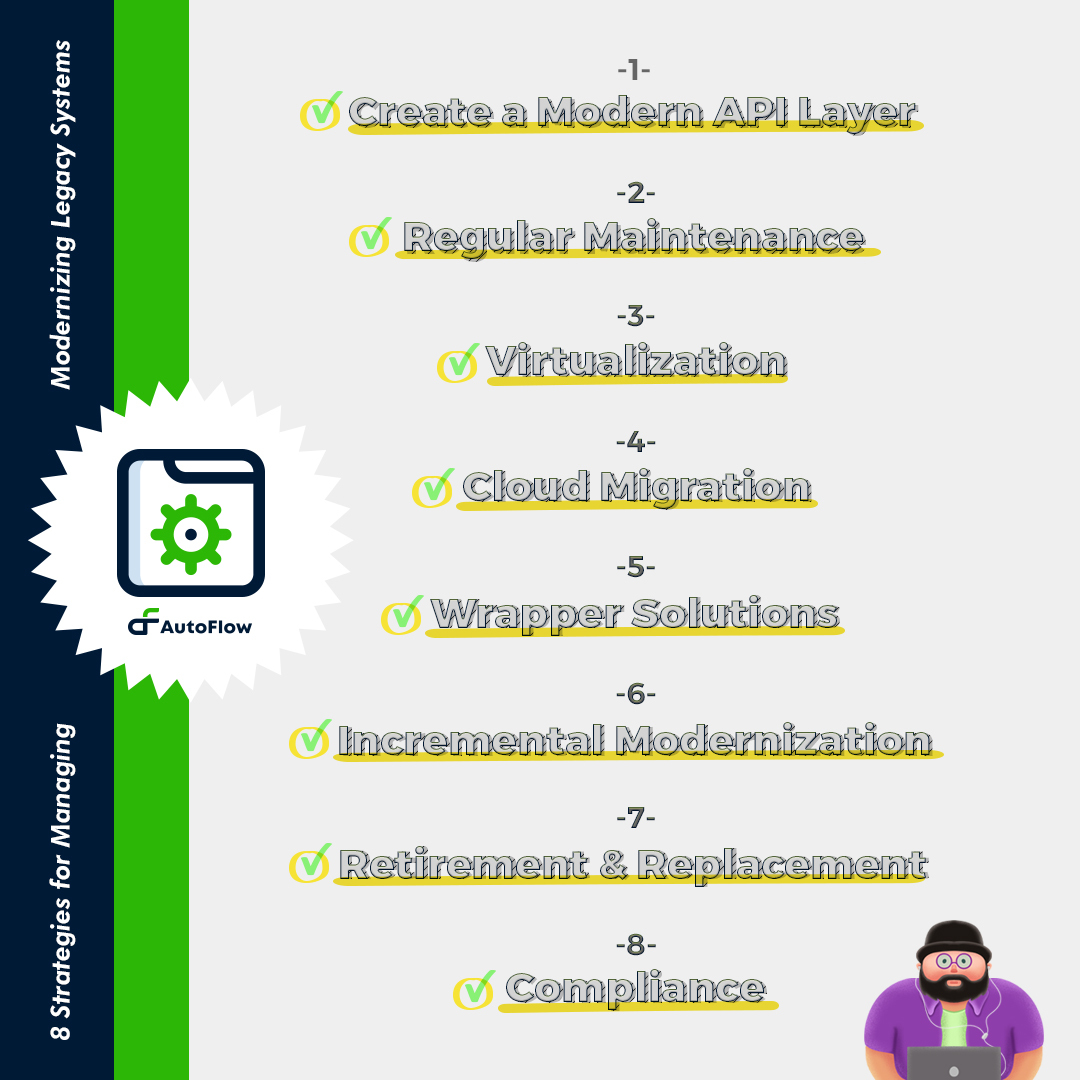What is a Legacy System?
A legacy system typically refers to an outdated computer system, but it could also be a combination of outdated and newly updated systems.
These systems are often characterized by outdated hardware and software, lack of compatibility with newer technologies, and limitations in terms of functionality and scalability. It can also pose a number of challenges for businesses, including increased maintenance costs, limited scalability, and security vulnerabilities.
Despite these challenges, many organizations continue to rely on legacy systems for important business processes. This makes it crucial for these organizations to have a plan for managing and modernizing these systems over time.
Challenges With Maintaining Legacy Systems
Legacy systems can present several challenges for organizations.
- Increased Maintenance Costs: Legacy systems often require specialized expertise and equipment, which can be expensive and difficult to find.
- Limited Scalability: These systems may not be able to handle the increased demands of a growing business, making it difficult to expand or adapt to changing market conditions.
- Security Vulnerabilities: Legacy systems may not have the same level of security as newer systems, making them more susceptible to hacking, data breaches, and other cyber threats.
- Limited Functionality: Legacy systems may not have the same functionality as newer systems, making it challenging to implement new business processes or integrate with other systems.
- Lack of Compatibility: Legacy systems may not be compatible with newer technologies, making integrating with other systems or sharing data difficult.
- Lack of Support: The manufacturer may no longer provide support or updates for the system, making resolving issues or fixing bugs challenging.
- Inability to Meet Compliance Requirements: Legacy systems may not be able to meet the current compliance requirements and standards, which can result in a heavy fine or legal action.
Strategies for Managing & Modernizing Legacy Systems
Here are some of the common strategies that organizations can use to manage and modernize legacy systems:
- Create a Modern API Layer: The applications wouldn’t know there’s legacy systems being used as the modern API layer becomes the new front for integration. API AutoFlow is commonly used to create a no-code API layer.
- Regular Maintenance: Regularly maintaining and updating legacy systems can minimize the impact of an issue and keep them running smoothly.
- Virtualization: Virtualizing legacy systems can improve scalability and reduce maintenance costs by allowing them to run on newer hardware and software.
- Cloud Migration: Migrating legacy systems to the cloud can also help improve scalability, reduce maintenance costs, and provide access to new security and management features.
- Wrapper Solutions: Wrapper solutions can add new functionality and integration capabilities to legacy systems without replacing the entire system.
- Incremental Modernization: Modernizing legacy systems incrementally, rather than all at once, can help to minimize the impact on operations and reduce costs.
- Retirement & Replacement: Retirement and replacement of legacy systems with new systems can be a viable option in cases where the cost of maintaining and modernizing them is too high.
- Compliance: Organizations need to ensure that their legacy systems comply with current standards and regulations and make necessary changes to meet the requirements.

Even though legacy systems are outdated for many organizations, they are still needed to keep their technology stack going. A new way to work with legacy systems is required to mitigate the challenges the organizations will face.
Unsure How to Tackle Your Legacy Systems?
No-code API solutions such as API AutoFlow can help create a modern API Layer. Reach out to us to discuss options that could support you and your organization.

May 31, 2023

Comments